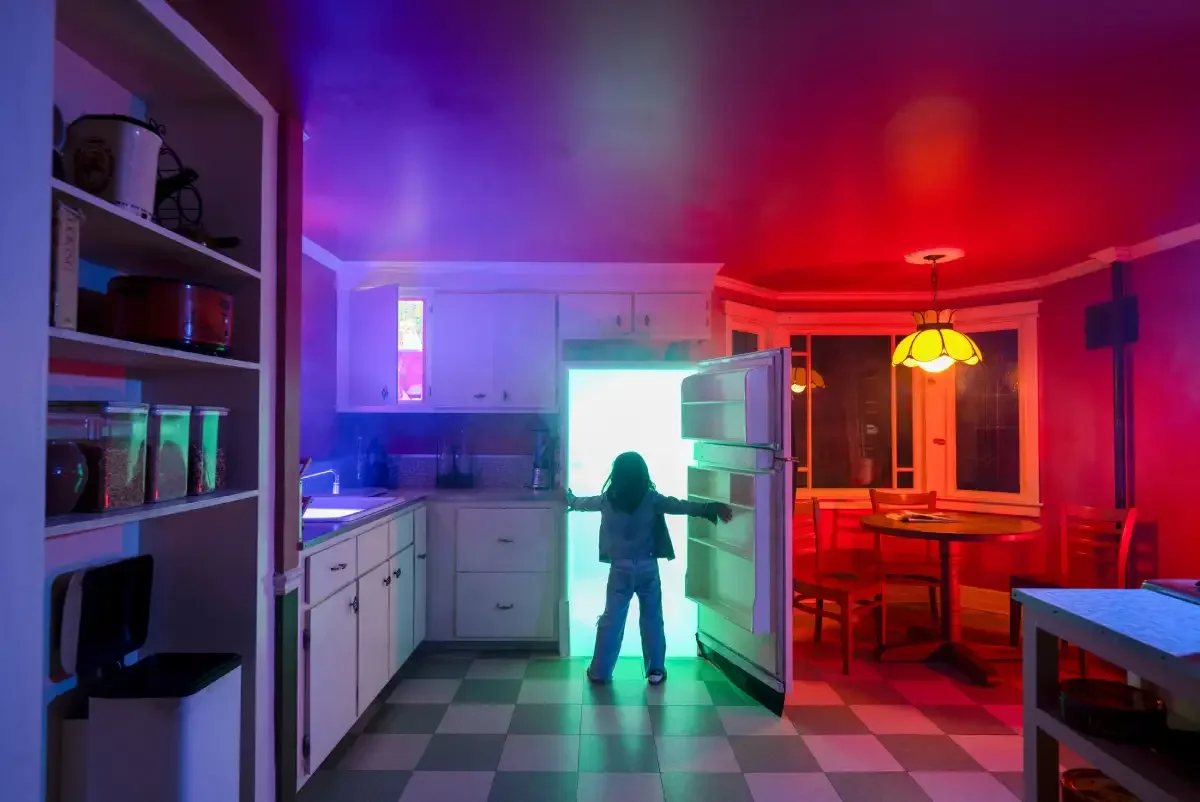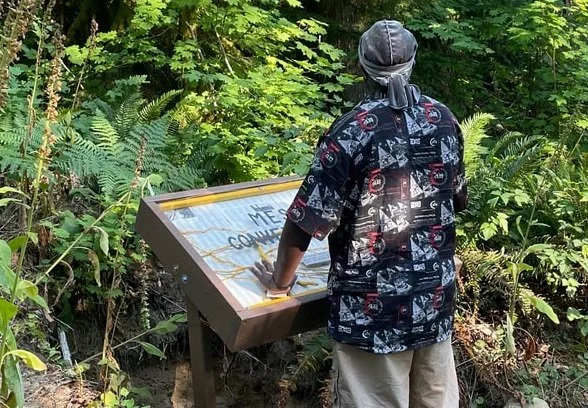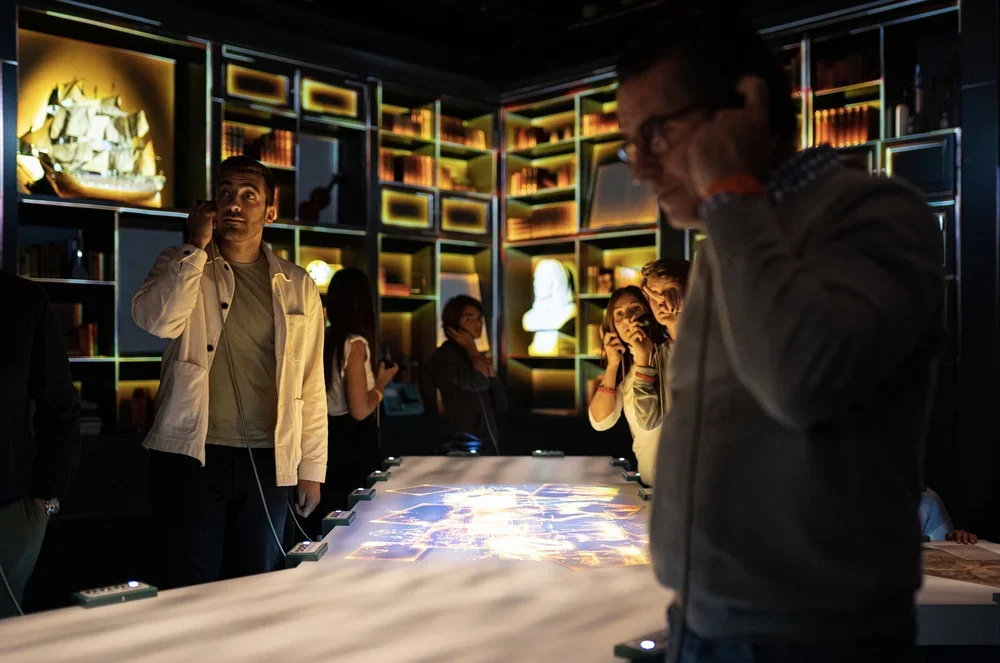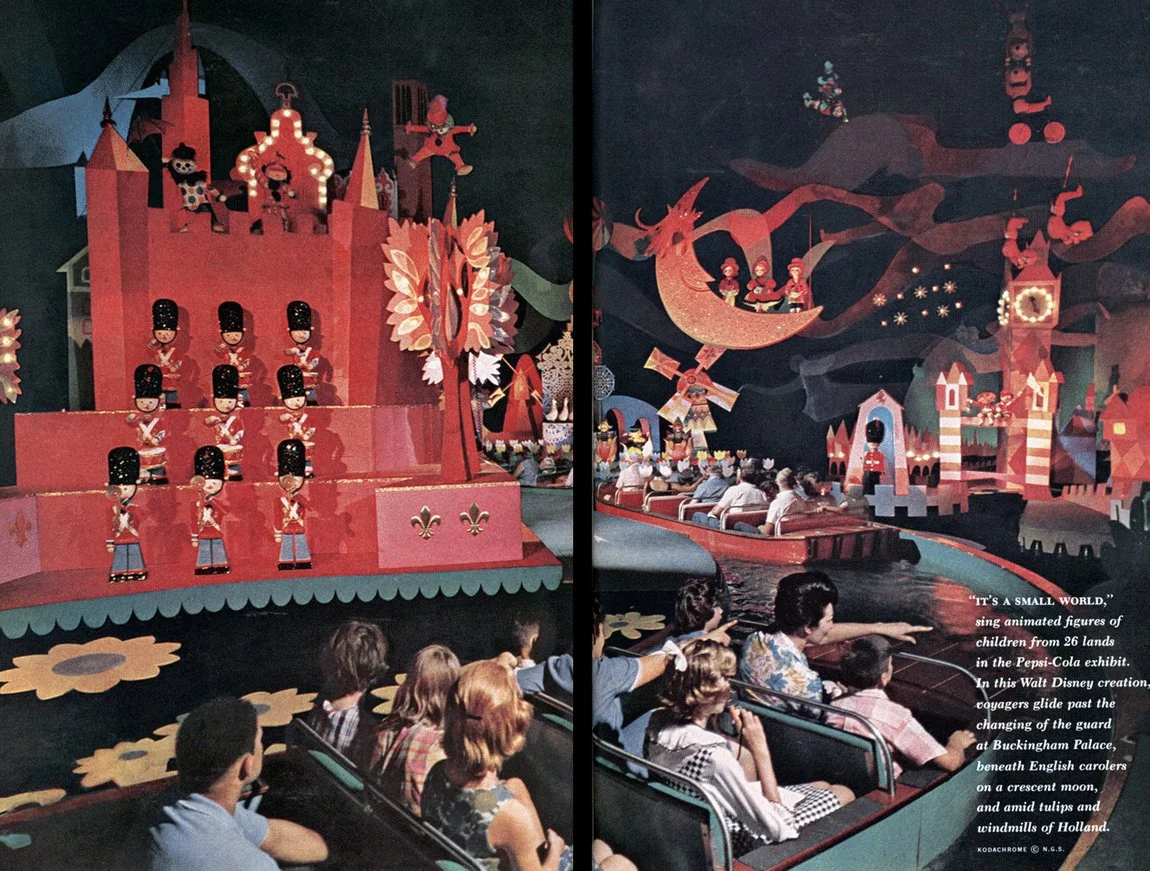Immersive: Overdone or Essential?
This article was written by IDA Programme Alum, Kacy Cartwright.
Meow Wolf’s House of Eternal Return, a landmark attraction hailed for its intense level of immersion and interaction. Image courtesy: Meow Wolf
Immersive. It is both our industry’s greatest descriptor while also being its most common (and sometimes despised) buzzword.
No matter in what context it is used, the word “immersive” has the textbook definition of deeply engaged, involved. However, the circumstances in how the themed entertainment industry has used the word now carries a particular, albeit widespread connotation.
Although the conversation around whether or not we should be overusing the word is still ongoing, I am not one to rehash an argument that has already been (in my opinion) articulated perfectly by Lou Pizante on Blooloop.
And, with NextGen Showcase’s rebrand to the Immersive Design Academy, there is no better time to explain why we continue to use it.
Let’s explore how the past, present, and future of the themed entertainment industry relies on our ability to understand and design with “immersive” in mind.
As a part of the Art Party Festival, Lacy Campbell’s installations blended writing, visual art, technology, and nature to encourage guests to connect not only with the environment, but with each other as well. Image courtesy: Lacy Campbell
“”Immersive” is what the term “storytelling” was in the early 2010s,” says Lacy Campbell, a Creative Director for museums, theme parks, and cultural attractions, whose career began in the world of theatre.
Although her projects are now almost all focused on experiential design, theatre is Lacy’s first love.
“I got into the industry pretty late because I had been making theater my entire life but I was interested in different styles of theater that reach a broader audience. I really fell in love with theater in its more traditional form, but it was clear to me that that style wasn’t really reaching everyone. My career path has been about better understanding and dismantling the barriers that keep people from enjoying theater as much as I do.”
She also makes it clear that the term “theatre,” much like “immersive,” is very fluid. Describing it as “multidisciplinary storytelling” gives us the chance to examine just how deep the idea of immersive design is intertwined with the history of the stage.
“Historically, theater has always been what people today would call immersive, by which I mean acknowledging the audience and the real-life circumstances that are surrounding the production and the performance. Modern Western audiences are very used to seeing hypernaturalistic sets on stage and lighting effects, but generally speaking, that’s a style that Russian theatre came up with only about a hundred years ago, along with the conceit of the fourth wall- which just means that the actors pretend they can’t see the audience, and the audience pretends that they’re not there and we just watch people in this magical little box on stage. When you really zoom out, isolating the audience from the action onstage is the fad. Immersive is not the fad.”
While it is true that theater and the themed experiences industry are intrinsically linked, Francisco (Frank) Javier Nunez focuses on the architectural and show set design elements that shape immersive experiences. As founder and president of FrankNDesign, a design and 3D modeling firm for theme parks, he believes the strength of these spaces are the environments they create.
“If a building is the body, the architect is thinking about the muscles, the bones being the structure, the lungs and eyes. We [show set designers] are the costume, the makeup and the hair.”
Part of Frank’s background in architecture lends to the idea of mastering a craft to then moulding it into something new.
“There is nothing that creates a more visceral experience of a built environment than themed entertainment. I’m a big fan of themed entertainment because it’s a place where you get to break what you learned as architectural principles, and it is way more about the guest experience.”
The role of the guest was the main point of connection between Lacy and Frank’s perspectives.
“There really is a case to be made that audience behavior and audience appetite demands this level of multisensory engagement,” Lacy says.
She’s observed the rise in usage- but the decline of understanding- of not just the word, but also the concept of immersive experiences.
“At first it was interesting, and then it became clever, and then it was like; everybody’s doing it. People were coasting on novelty for a minute. I don’t know if we’re going to go further in terms of market saturation, but I think we can go a lot deeper with how well we use the form.”
“It’s definitely a buzzword,” Frank agrees. “It’s definitely overused in some occasions. I believe that ‘immersive’ is the ‘organic’ of the entertainment space; everybody puts organic on everything. However, cliches exist for a reason. They exist because they’re true.”
Which asks the question: how do we continue to create experiences that live up to the pedestal “immersive” has now landed on?
For Lacy, it has to have purpose: “Theater does a good job of responding to audiences in real time. I moved from traditional theater into theme parks because this is where people want to be. There’s so many opportunities to workshop and try stuff, and the smartest parks are the ones that are experimenting non-stop. In so many ways, theme parks are the future of American theater.”
But she cautions the overzealous producer from immediately labelling something new as immersive.
“Be prepared to say how it is immersive and in what ways it is immersive. Is it site-responsive? Is it interactive? And the biggest one: Why? You may want to hand over a ton of agency and power to your audience members, but how do you do that in a way that they’ll actually succeed and have the kind of experience that they want?”
For Frank, the label has to be earned. “There are writers, there are scenic designers, there are parks that have the right to say immersive because they’ve achieved that.”
He asks designers, “Is the environment just there because you needed four walls, or is the environment contributing to the story and is the guest journey aligned with that story? I think those things are just required.”
Still Relevant?:
What do our alumni think?
It seems clear that for the experts of the themed entertainment industry, the use of “immersive” has become a symptom of the overall evolution of the craft. Whether an overused buzzword or a design ambition, it’s not going anywhere.
So: with the newly renamed Immersive Design Academy continuing to educate and prepare the designers of tomorrow, what do their alumni consider the role of the word to be?
“I feel like the industry at the moment has a misguided approach towards ‘immersion’,” remarks Gordon Mlynarek (Alum 2023-24, Tyche Entertainment),“There is this fallacy that making an all-encompassing immersive experience somehow always results in a better story. All other media works just fine with having you [the guest] as an outside observer, even in interactive media like video games.”
“The word doesn’t always need to be attached to participation in the story, it certainly can be passive as well,” agrees Alli Nauert (Alum 2023-24, RebaVision International), “Immersive experiences as a whole certainly don’t all have to have guests in an active role, sometimes just being in a new world is enough!”
While the approach to integrating guest roles as a part of the world is more fluid, there is one thing that remains central: the guest experience.
“I’ve always been of the school that immersion needs to have buy-in as a part of it,” adds Arjun Singh (Alum 2024-25, Solstice Studios):
“If you’ve gotten someone to the spot where they can suspend their disbelief and engage with the world you’ve created, whether you’ve actively carved out a space for them or not, I’d argue they’re immersed in it.”
THEA award-winning QUAKE Lisbon Earthquake Experience takes guests back in time in an “immersive walk-through experience” where they learn about the 1755 earthquake by experiencing it first-hand. Image courtesy: Jora Vision
Rosie Willoughby (Alum 2022-23, Theme5) comments: “For me, questions about immersion run parallel with the same questions about the word ‘authentic’. It’s a long-running debate about how we could ever make an 'authentic’ representation of fantastical locations that couldn’t exist in reality- and it is the same logic to say that ‘immersive’ experiences can only be defined in the mind of the beholder. Because it’s all down to how guests choose to engage, and what emotions they take away from an experience- so the phrase ‘immersive’ feels like fair game to embody the pinnacle of what we want to achieve from the design process.”
The popular Hobbiton Movie Set Tour in New Zealand offers fans the chance to step into the world of Lord of the Rings on the very land the films were made. Image courtesy: Viator
For Gordon, the experience of immersion actually lives in how the guests use their agency to interact within a space. “We are programmed at this point to expect everything at a theme park to be fake, non-functional, or out of reach. When you have that moment where you interact with something and it actually responds? That’s magical.”
It seems that the future of self-proclaimed “immersive” experiences, at least according to these designers, lies in creating spaces that feel even more real, more lifelike, and more exploratory than ever before. An experience that strives towards that descriptor is more than likely to live up to the immersive moniker.
Putting the Immersive into
Immersive Design Academy
Knowing the contentious connotations that the word “immersive” brings, why do we still use it?
For the Immersive Design Academy in particular, it almost became a necessity: “We were hesitant about using it - immersive has become such a buzzword - but we kept coming back to it,” explains Emma Bashford, Producer and co-Founder of the programme.
"To us, 'immersive' succinctly describes the breadth of scope of our work, from theme parks to museum exhibits and pop-up brand experiences.” Immersive Design Academy, when under its previous name of NextGen Showcase, found limitations in the perception of the projects outside of the already established framework of themed entertainment design. “We want our students to be open to wildly different interpretations of the project brief, not just theme parks.”
With a broader scope also comes the opportunity for broader participants. “You don’t need to know the phrase ‘themed entertainment’ to find us. [Immersive] has a lower barrier to entry for someone that is totally new to the field.”
More exposure of the themed entertainment industry and its processes to people of varying skillsets, talents, ages, locations, and backgrounds can only lead to better and bolder experiences to come.
As Emma puts it, “We kept coming back to it [immersive], and realized that it was the simplest descriptor for the work we inspire.”
There will always be reasons to control the language we use when describing our work. Whether to better describe the importance of a design choice or to defend the legitimacy of our artform, immersive seems to have stuck.
Frank - “At what point did I experience what I can describe as a threshold of immersion? As early on as ‘it’s a small world’. When you’re in it, you don’t know where your car is parked or what you had for breakfast. You’re literally gone.”
“it’s a small world” opened at the 1964 New York World’s Fair, and has been delighting guests all over the globe ever since. Image courtesy: Designing Disney
Lacy - “An example I use as a gold standard of an absolutely accessible immersive experience is an American baseball game. It is tied to an environment, it’s interactive and multisensory, and audiences are empowered to engage as much or as little as they want to. That’s where we need to be looking in terms of immersive productions.”
No matter if you’ve been a part of hundreds of projects or are just getting started, the importance of ensuring that themed entertainment lives on for a long time is the ability to make it more accessible to our guests. Whether that means putting interactive theater into theme parks, bringing more experiences into the digital space, or something that hasn’t even been invented yet, he continued exposure of our art through the lens of the term “immersive” can only lead to bigger and better experiences that attract people from all over the globe.
Although some might find it to be tedious at this point, until we can find another word to succinctly describe what it feels like to disappear into a story, experience something you thought you never could, or share in a frozen moment of time with the people you hold close? Immersive can stick around.
This article was written by IDA Alum, Kacy Cartwright, with Editing assistance from Rosie WIlloughby and Emma Bashford.
We would like to extend our sincere thanks to Lacy Campbell (2024/25 Programme Mentor) and Francisco Nunez of FrankNDesign (2024/25 Sponsor) for their contributions.
Image Sources:
Meow Wolf
https://meowwolf.com/visit/santa-feLacy K Campbell
https://www.lacykcampbell.com/artistic-installations.htmlDesigning Disney
https://www.designingdisney.com/parks/disneyland-paris/disneyland-park/fantasyland/designing-its-small-world-1964-new-york-worlds-fair/Jora Vision
https://joravision.com/news/2022/8/25/quake-lisbon-earthquake-centerViator: Hobbiton Tour
https://www.viator.com/en-IN/tours/Auckland/Hobbiton-Movie-Set-Small-Group-Tour-with-Kiwi-Style-Picnic-Lunch/d391-56760P25






